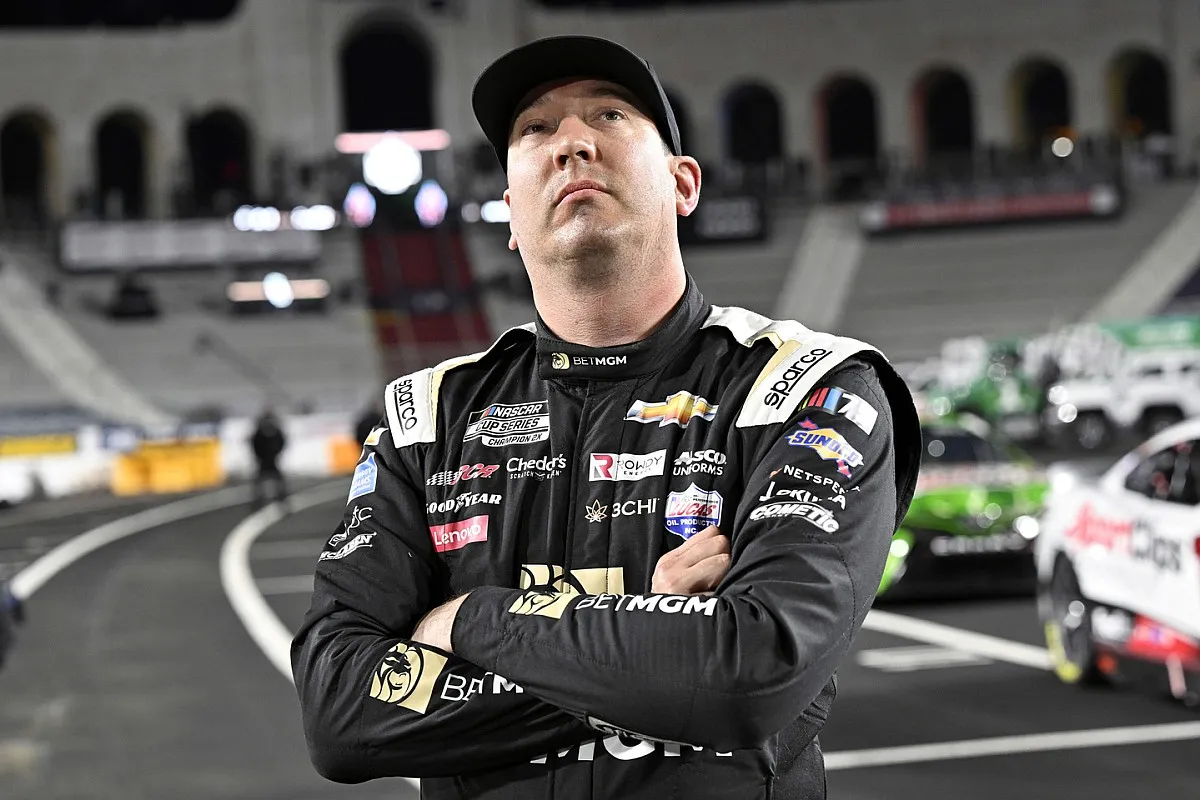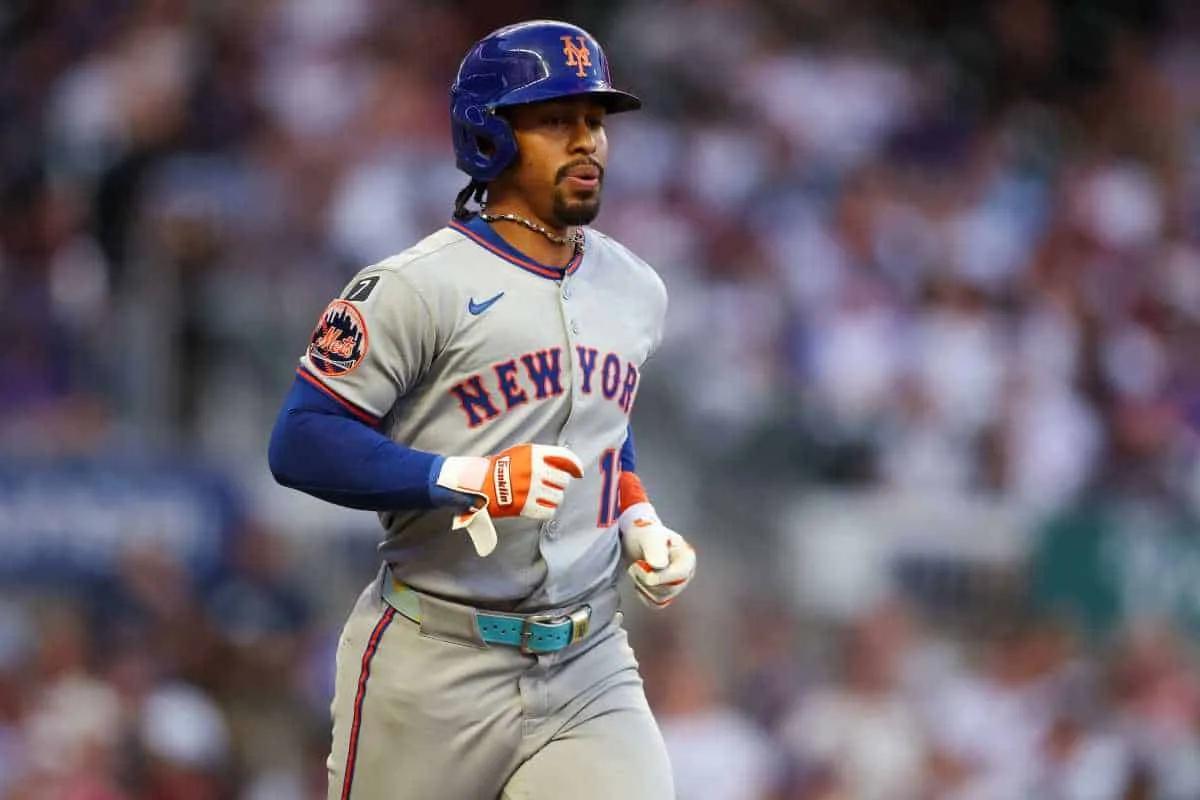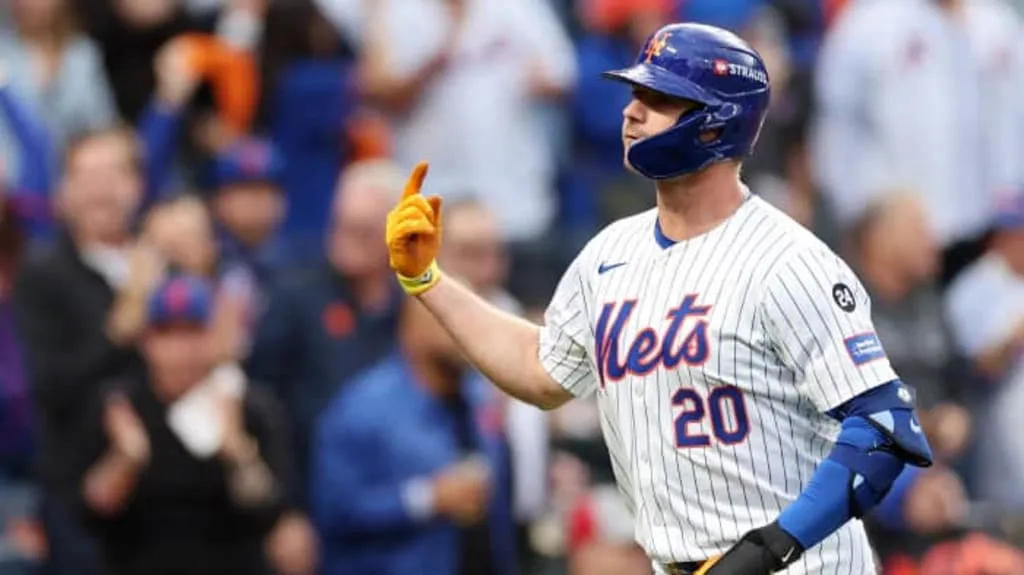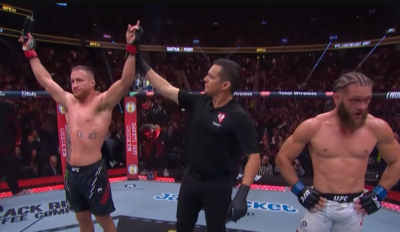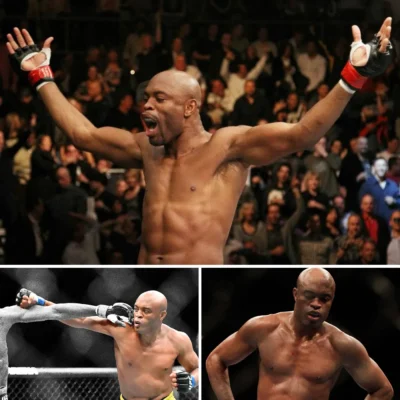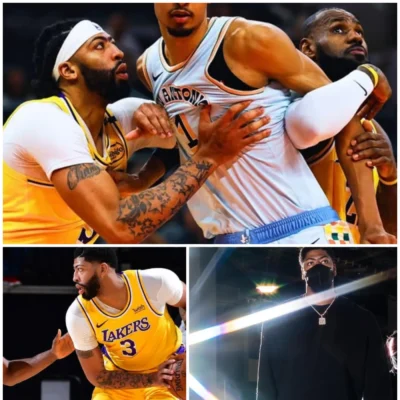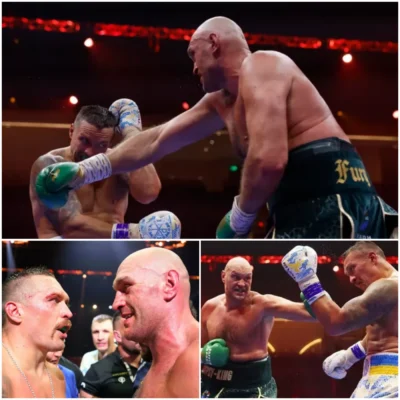
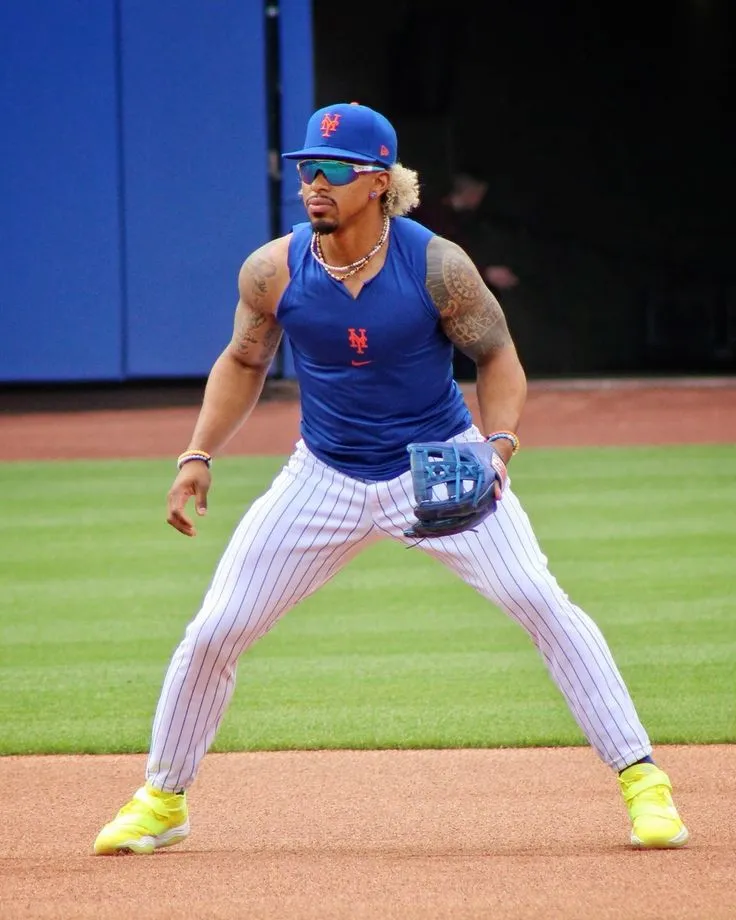
Francisco Lindor’s Rocky Mets Debut: How the Star Shortstop Turned Struggles into the Start of a Redemption Story
When the New York Mets traded for Francisco Lindor ahead of the 2021 season, the baseball world erupted in excitement. Lindor, already a four-time All-Star with the Cleveland Guardians (then Indians), was known for his infectious smile, electric defense, and switch-hitting power. He was expected to become the face of a new era in Queens—a superstar who could carry the Mets back into consistent contention. But what began with fanfare and sky-high expectations quickly spiraled into doubt, criticism, and frustration as Lindor’s debut season with the Mets was anything but smooth. What makes his journey so compelling, however, is how he slowly began to transform struggles into a redemption arc that is still unfolding today.
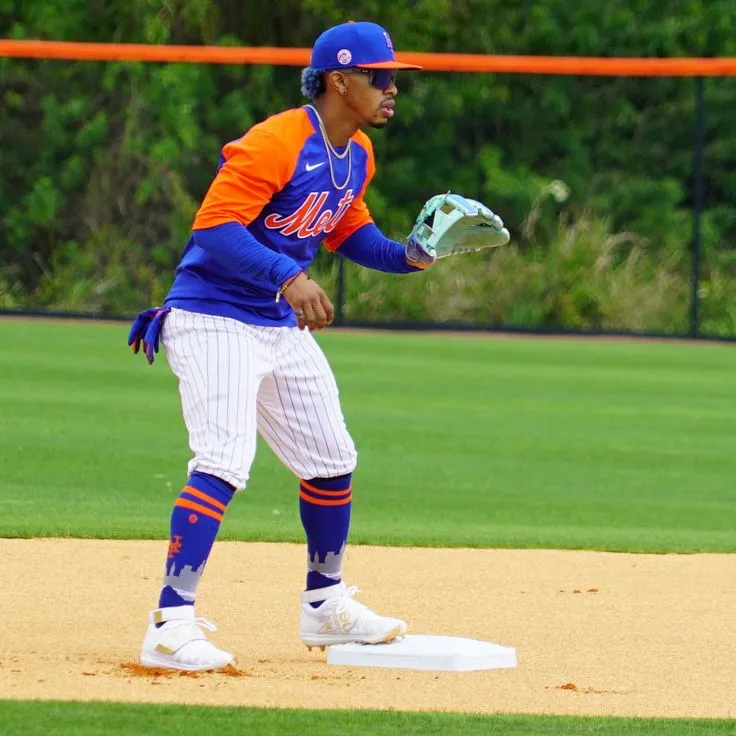
The Weight of Expectations in Queens
Few players in recent baseball history have entered a new chapter with as much pressure as Francisco Lindor. The Mets not only traded key assets to acquire him, but they also signed him to a 10-year, $341 million contract—the kind of deal that instantly paints a target on a player’s back. In New York, expectations are never modest, and the Mets fan base, starved for sustained success, saw Lindor as the centerpiece of a long-term plan.
From Opening Day, the spotlight was unrelenting. Every at-bat, every swing, every moment at shortstop was scrutinized. The city that adored legends like Derek Jeter across town expected nothing less than brilliance from their new star. Yet Lindor quickly found that wearing the Mets uniform carried its own kind of weight, one that even a seasoned All-Star wasn’t fully prepared for.
A Season of Struggles
The first half of Lindor’s 2021 season was plagued by offensive inconsistency. His trademark line-drive power and quick bat seemed muted. By the end of May, he was hitting below the Mendoza line, his batting average hovering uncomfortably near .200. The boos at Citi Field grew louder, a harsh reality of playing in New York where patience is scarce.
Fans began to question whether the Mets had made a colossal mistake. Commentators on sports radio and national broadcasts debated if the superstar shortstop could handle the pressures of New York. Lindor’s struggles weren’t just about numbers; they became symbolic of the Mets’ frustrations as a team that, despite high hopes, struggled to dominate their division.
Defensively, Lindor remained strong, flashing his Gold Glove-caliber skills, but baseball is often judged by offensive production. For a player with a contract worth over $300 million, dazzling defense wasn’t enough to silence the critics. His smile—the one that once defined his persona—seemed to fade under the storm of skepticism.
The Turning Point
Adversity, however, often reveals a player’s character. For Lindor, the challenges of his rocky debut forced him to adjust not only his approach at the plate but also his mental outlook. By midseason, he began to show signs of resilience. While a significant oblique injury in July sidelined him for weeks, the setback seemed to reset his mindset.
Upon his return in August, Lindor displayed a renewed determination. The defining moment came in September during a heated Subway Series game against the New York Yankees. In front of a packed Citi Field, Lindor launched three home runs, carrying the Mets to a crucial victory. The performance was not just a statistical highlight but an emotional outpouring—Lindor pointed to his wrist, flashing a gesture that screamed, “It’s my time.” For Mets fans, it was a glimpse of the superstar they had been promised.
Learning to Embrace New York
What became clear over time was that Lindor’s struggles weren’t just about mechanics or slumps; they were about adapting to the unique environment of New York baseball. Unlike in Cleveland, where he grew into a star in a smaller market, the constant media scrutiny and demanding fan base of New York required a different kind of toughness.
Lindor learned to embrace the challenge rather than fight against it. He acknowledged the boos, admitted his struggles, and began connecting more with teammates and fans alike. His authenticity—openly admitting when he needed to improve—helped soften some of the criticism. More importantly, it showed that he wasn’t just a superstar by numbers but a player willing to grow through adversity.
Building the Foundation of Redemption
While Lindor’s first season in Queens ended with underwhelming overall numbers—a .230 batting average with 20 home runs—the foundation of his redemption story had been laid. Baseball is a game of long arcs, and superstars are often defined not by how they avoid slumps, but by how they respond to them.
In the seasons that followed, Lindor began to settle into his role as the Mets’ leader. His defense remained elite, but more importantly, his offensive production returned closer to his career norms. His ability to hit in clutch situations, combined with his clubhouse presence, made him indispensable. Fans who once doubted his worth began to see the value in his all-around contributions.
A Symbol of Resilience
The story of Francisco Lindor’s rocky debut is more than just a tale of one player’s slump; it reflects the broader narrative of what it means to play in New York. To survive in Queens, a player must endure storms of criticism and emerge stronger on the other side. Lindor’s struggles humanized him, stripping away the illusion of effortless greatness and replacing it with something far more relatable—resilience.
Today, as the Mets continue to push for postseason relevance, Lindor stands as both a cornerstone and a symbol. His redemption is not just about statistical rebounds but about embracing leadership, showing perseverance, and proving that even the brightest stars can stumble before they shine again.
The Legacy Still to Be Written
The beauty of baseball is that it thrives on long narratives. One season, even one contract year, does not define a player’s legacy. For Lindor, the rough start with the Mets will always be part of his story, but it may ultimately serve as the dramatic first act of a much greater saga.
If Lindor continues to lead the Mets into contention, his early struggles will be remembered not as a failure but as the crucible in which his New York identity was forged. Redemption in baseball is never instant—it is earned over seasons, with patience, persistence, and performance.
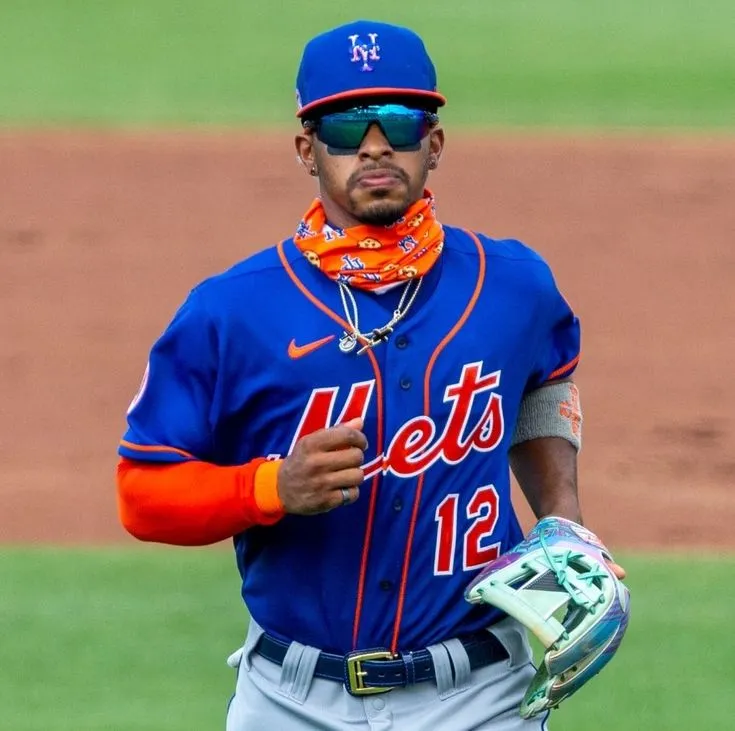
Conclusion: From Struggles to Redemption
Francisco Lindor’s rocky debut with the Mets is a reminder that greatness is rarely linear. Expectations can crush, but they can also create opportunities for transformation. What began as a disappointing introduction has the potential to become the foundation of a powerful redemption story—one that not only defines Lindor’s career but also resonates with Mets fans who have long craved resilience and hope.
As Lindor continues to suit up in Queens, his smile has returned, no longer just a symbol of joy but of perseverance. For the Mets, and for baseball, his journey stands as proof that even the brightest stars must sometimes stumble before they rise.








